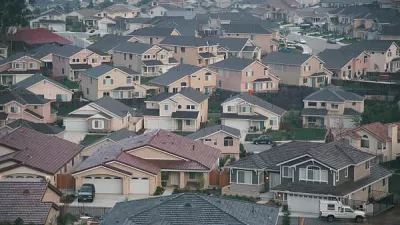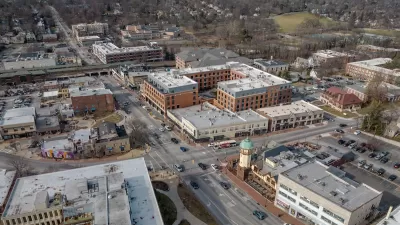With their unhealthy environments, unsustainability, and relatively poor return on investment, "the suburbs" are an easy target for criticism. But suburbs aren't inherently inadequate, says David Levinson, they suffer from poor postwar urban design.

Not all suburbs are bad, points out Levinson. Take the streetcar suburbs built prior to World War II for example, or the small towns that eventually became parts of larger metropolitan areas. "It is a particular design of a particular era," that creates a bad name for "the suburbs", he writes.
"The problem with the suburbs isn’t that they are not the city," adds Levinson. "The problem with the suburbs is the same problem as the city, they had a bad 5 or 6 decades of urban design. Cities in the same period saw urban renewal, mostly mediocre architecture, replacement of buildings with surface parking lots, and a general hollowing out. It’s not because it’s the city that this is a problem, it’s because there were some terrible design (planning, engineering) memes out there which got implemented as policy, while operating in a market that just had no taste. It is worse with the suburbs, as for many, those six decades of urban design were the only six decades of development they had, while for the city, at least the older street network remained mostly intact, as did some of the older commercial buildings and much of the housing stock."
FULL STORY: It’s not the suburbs, it’s mid-late 20th century urban design, planning, engineering, and architecture

Planetizen Federal Action Tracker
A weekly monitor of how Trump’s orders and actions are impacting planners and planning in America.

Maui's Vacation Rental Debate Turns Ugly
Verbal attacks, misinformation campaigns and fistfights plague a high-stakes debate to convert thousands of vacation rentals into long-term housing.

San Francisco Suspends Traffic Calming Amidst Record Deaths
Citing “a challenging fiscal landscape,” the city will cease the program on the heels of 42 traffic deaths, including 24 pedestrians.

Amtrak Rolls Out New Orleans to Alabama “Mardi Gras” Train
The new service will operate morning and evening departures between Mobile and New Orleans.

The Subversive Car-Free Guide to Trump's Great American Road Trip
Car-free ways to access Chicagoland’s best tourist attractions.

San Antonio and Austin are Fusing Into one Massive Megaregion
The region spanning the two central Texas cities is growing fast, posing challenges for local infrastructure and water supplies.
Urban Design for Planners 1: Software Tools
This six-course series explores essential urban design concepts using open source software and equips planners with the tools they need to participate fully in the urban design process.
Planning for Universal Design
Learn the tools for implementing Universal Design in planning regulations.
Heyer Gruel & Associates PA
JM Goldson LLC
Custer County Colorado
City of Camden Redevelopment Agency
City of Astoria
Transportation Research & Education Center (TREC) at Portland State University
Jefferson Parish Government
Camden Redevelopment Agency
City of Claremont





























